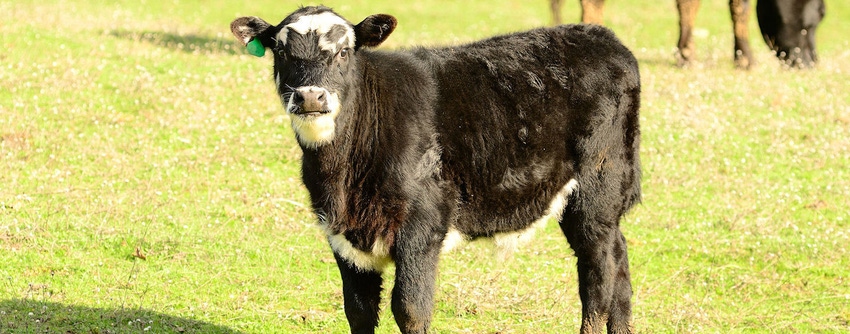October 6, 2014

Sitting ringside at a cattle show, taking in the glory of fit-to-perfection heifers is nice, but degree of condition, length and quality of hair coat and even a unique color pattern can obscure the true production qualities of show heifers, says Adele Harty, South Dakota State University cow/calf field specialist.
While phenotype does demand a place in heifer selection, Harty says some females that aren't necessarily as clean in their design can be just as productive as the more desirable heifers at first glance.
The following are five indicators that might deserve consideration when selecting a breeding female, Harty says:
1. Good ancestry: Within all breeding programs, there are those cow families that continually excel from a maternal perspective: Daughters reach physiological maturity at an early age, conceive early which results in an early calving timeframe and consequently have the ability to re-breed and calve during the first or second calving interval the following year. Research indicates that heifers calving early with their first calf wean heavier calves and remain productive longer throughout their lifetime. Selection pressure based on ancestry deserves serious consideration.
2. Safe disposition: Some genetic bloodlines are documented to be temperamental causing concerns for the safety of those handling the cattle and the ability of those handlers to work the cowherd or feedlot cattle in a low-stress manner. Disposition can have an adverse impact on reproductive efficiency as well and research documents the negative impact of bad dispositions on feedlot performance and carcass quality in cattle that are readily excitable. Genetic markers have been identified that can provide some input into identifying those bloodlines with desirable dispositions and those that tend to be more temperamental. Disposition should be near the top of any priority list when selecting replacement heifers.
Related: EPDs: Selecting Bulls for Easy Calving
3. Milking ability: While heifers and cows with higher levels of milk production typically wean heavier calves, more may not necessarily be advantageous in all cow/calf production systems. Higher cow/heifer milk output demands higher levels and quality of nutritional intake. Systems that feature more range conditions and intensive forage diets during late gestation and early lactation may not be suited for cattle with elevated levels of milk production. High milk production potential levels without the needed feed resources to support them may have a negative impact on reproductive rates. Selecting heifers with milking potential matched with your environment and feed resources is critical to her longevity in the herd.
4. Ability to calve unassisted: This may relate to point-one above: Cow families with numerous daughters in the herd profile usually are those with little or no calving difficulties in their genetic makeup. Dystocia is documented as having a negative impact on the length of time females take to return to estrus and conceive. Obviously, management decisions involving the choice of herd sire and their birth weight Expected Progeny Differences can play a role in this process so that aspect should be considered in this criteria. However, heifers from proven cow families of minimal calving difficulties recorded, and those with a shorter gestation length, deserve consideration when selecting heifers.
5. Ideal mature size: At a time when "moderate frame" is commonplace in cow circle discussions, the degree of moderation in heifer selection may vary from one cowherd to another. Several considerations are involved in this criteria including environment/terrain, feed resources and whether you market calves at weaning, background them or finish them. It may also depend on whether you are a seed stock producer or commercial cattleman. Cull cows represent about 15% to 20% of herd income in most cattle operations; consequently, monitoring mature cow size deserves consideration in the heifer selection process. Mature cow size is highly heritable and responds to selection.
Related: Enhancing Beef Breeding with the Help of Genomics
While a desirable heifer phenotype is a priority for most cattlemen, that criteria may, or may not, be an economic indicator of herd production efficiency or profitability, Harty notes. Including a combination of visual, physical (pelvic measurement and reproductive tract score), genetic and ancestral considerations in the heifer selection process seems to be a sound approach.
"Recognizing the uniqueness of management systems based on the long-term goals of that production program is extremely vital for cattlemen. Selecting heifers to meet those goals is very individualistic," Harty advises. "Basing selection criteria on those of another producer may not result in long term herd profitability."
Adapted from " Heifer Selection: It’s Not Just About Phenotype" by Adele Harty, South Dakota State University Cow/Calf Field Specialist
You May Also Like




